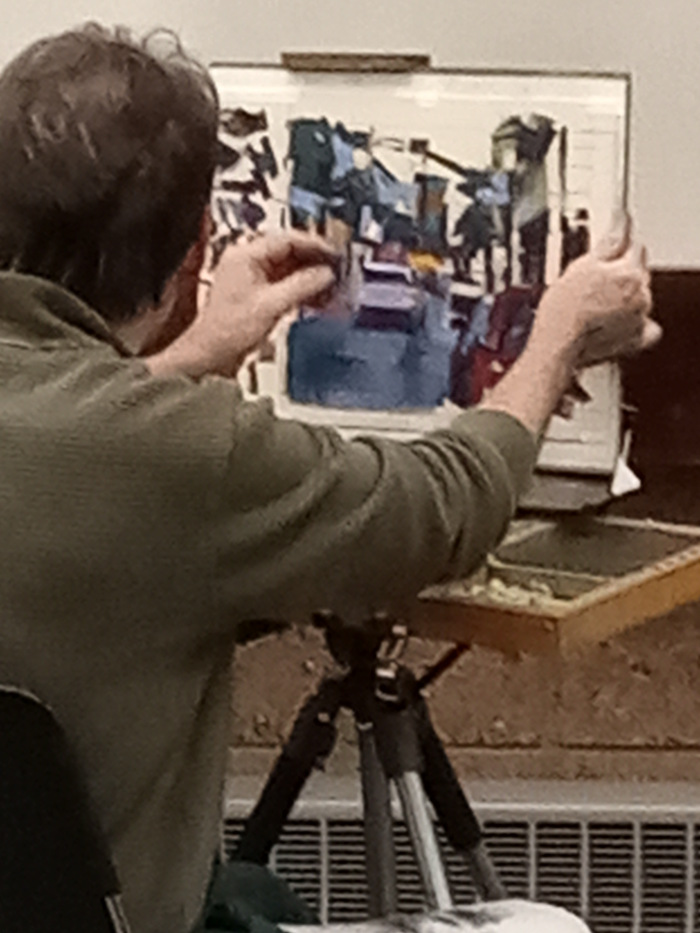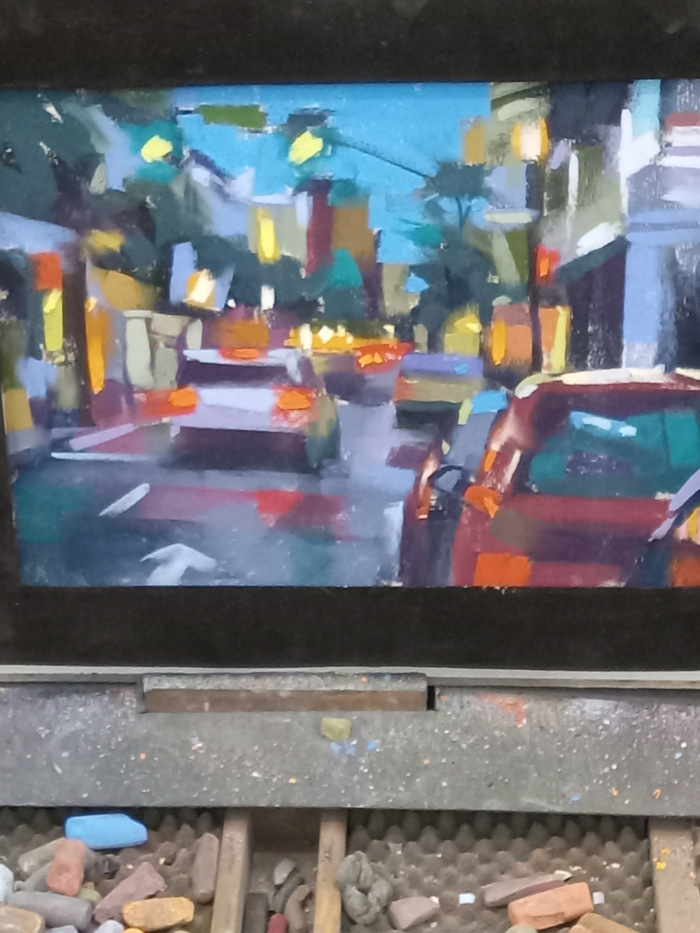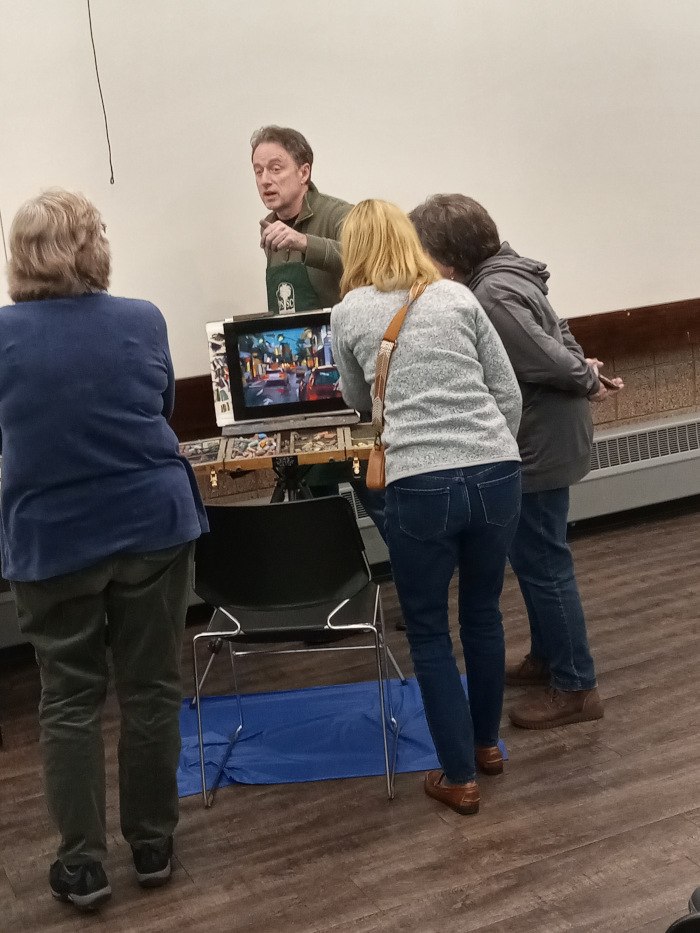

Upcoming Meetings
May 14
New Brighton Community Center, 7-9pm in Community Room A
Hey, we have a great demo for you coming up, presented by our workshop instructor Aline Ordman, an award-winning artist. Aline has received numerous accolades, including PSA Master Pastelist, Eminent Pastelist with IAPS and is a Signature Member of the American Impressionist Society. She has won awards several times in the Top 100 Pastels issues of Pastel Journal and was a featured artist in this year’s February issue.
She is also a highly recommended instructor and teaches workshops throughout the country and in Europe. Her website is www.alineordman.com and she maintains a blog at http://alineordmanartwork.blogspot.com.
July 12
Bryant Lake Park, 4 – 7pm.
Come join us at Bryant Lake Park for a great time to do some pleine-air painting. The location is west of Minneapolis, so those near the area can participate and not worry about long drives. Last year we had a wonderful time at Keller Lake. Don’t miss out on this one!
September 10
Ink Line Drawing
New Brighton Community Center, room 224
Art Weeks is an award-winning artist in a variety of mediums including pastel, oil, acrylic and watercolor. He is active in the Lake Country Pastel Society, Minnesota Watercolor Society, Outdoor Painters of Minnesota, and North Star Watermedia Society among others. He is also on the faculty of the Minnetonka Center for the Arts and teaches Pastel Landscape and Watercolor Foundation on a periodic basis. A retired architect, he holds a B.A. in architecture from the University of Illinois and led many successful projects in the private and public sector during his career. He enjoys pastels as an artistic medium because of the rich color and combination of drawing and painting skills the medium requires.

Board meetings are held on the first Tuesday of every other month, beginning with January, from 5:30-7:00 via zoom.
Member meetings are the second Tuesday of the same month as the board meeting, from 7-9pm.
At our member meetings we feature guest speakers, demonstrations, materials and equipment information, critiques and exchanges of information and insight to further members' artistic development and our sense of community as a society.
Our meetings are held at the New Brighton Community Center, 400 10th St. NW, New Brighton, MN 55112, in Room 224.

Past Meetings
Recap of March 12 presentation
MaryAnn Cleary’s presentation began with a slide presentation, starting with her personal journey on painting. She had a good background in art while attending Mesa College in Arizona. Her images were mostly about life and portraits, showing samples of her early works. Her first award came in Rush city from the Winslow Art Challenge. When she came across Tonalism, she did extensive research on its history, which began after the civil war in the 1880s, into 1900. Her favorite tonalist influence is John Henry Twachtman. Impressionism had dominated the scene back in those years, so Tonalism was downplayed. In the beginning the focus was on landscapes, but eventually the style opened to interpreting poetry, photographs and other items. As an art technique it remained irrelevant until about 1972. David Cleveland wrote a book on Tonalism and declared there were a minimum of 12 main characteristics of the art form. The goal of the artist is to get an emotional response from the viewer. Following are his list of 12 attributes:
- Subtle color tones
- Aesthetic and expressive
- Stress is on symbolic form
- Atmosphere or unseen air
- Vibration and refraction of tones
- Expressive paint handling
- Employment of abstract and natural forms
- Use of soft edges, ambiguity, and mystery
- Emphasis on broad, graphic, and abstract reading of features, rendering an emotional response
- Poetry of the landscape
- Contained a spiritual dimension
- Feeling or mood evoked by the arrangement of the elements
Color is toned down, the main seasons interpreted are spring and fall. Many of the paintings are plein air featured, sketching is also quite numerous. Sometimes just the colors are taken down during plein air, for actual painting in the home studio. Tonalism is a precursor to Modernism. MaryAnn then showed samples of well-known tonalist artists, such as Whistler, Albert Pinkman Ryder, John Henry Twachtman, and others. She shared variations of their influence on the art form as well as common traits between them. This was followed by samples of modern tonalist painters. These included Paul Palmer, Kim Lordier, Wolf Kanm, Loriann Signoir and others.
She wrapped up her presentation by explaining her approach to Tonalism. Explained how to mix her own grounded pastels for her paintings. Sometimes she uses pumice gesso for her own work. She always does thumbnail paintings before the final version. Explained the process of reusing fixative sprays to layer her pastels. Prefers using gator board and not foam boards, due to how the foam boards curl when they dry. Shown a short video about tonalism at the end of her presentation. After the session, she left some pastels and treated paper in the back of the room for any attendees to test her papers with paint strokes. Different textures on papers she intentionally created for us to experiment with.
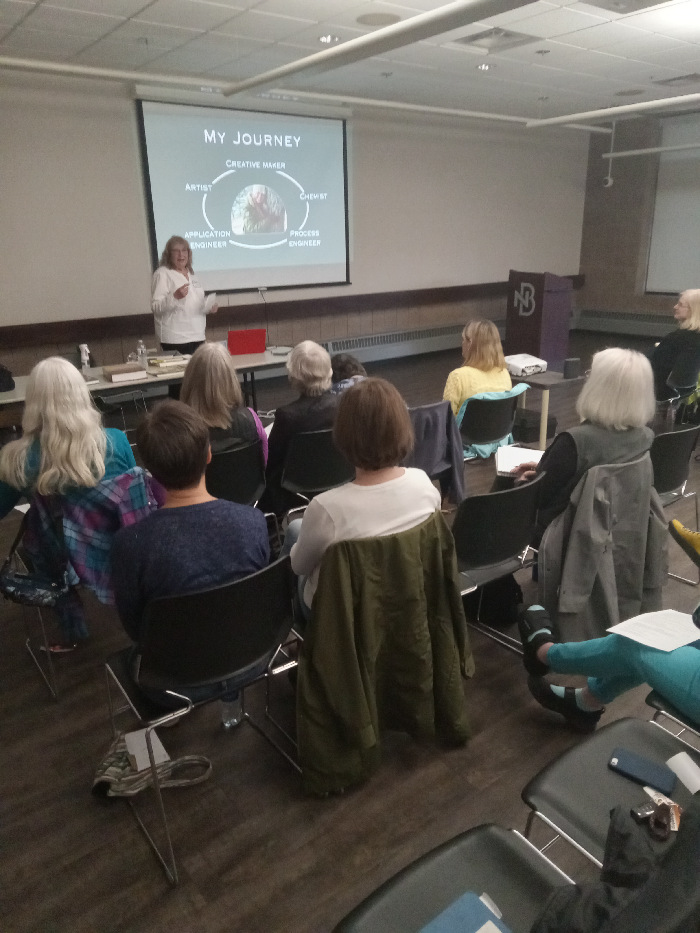

Recap of the January 13 Paint-In
Yes, it was snowy in many parts of the state, but not much in the metro area, so despite the cold temperatures, there were eight of us that gathered at the New Brighton Community Center. Many of us jumped right into it once we got there. Then, naturally we all took a break to see what others were doing. Sue Rowe had chosen to work with two images she had planned to finish. Alitta was doing a great job on her chickens with her pan pastels. Nancy made great progress on her snowy grassland. Steve was experimenting with his cheese grater for making night time stars to go with his aurora borealis experiment. We got into discussions about the different types of pastel sticks we used and what brands we had preferred. Gwen was not happy with the paper she chose to bring, so started all over again with another image altogether. Sandy and Chris made great progress on their paintings. After the short break and choosing from the various munchies made available, we all got back to work. Coming in late was Dawn, who had a goal for the year of doing 15 paintings, each to be done (not completed) in 15-minute segments and on 15 x 15 square sheets of paper. She had her rough draft completed when it was time to leave. The time went fast and we all had great pleasure sharing stories, techniques, and ideas for each of our works in progress. I confess, that I had so much fun that I failed to take any photographs of our event! Next time I will remember, I promise.
Recap of the November meeting: Paint Around
Five people were willing to use their talents for our Paint Around. Most new members were not aware that this is our fund raiser for the organization. The five people were Cheryl LeClair Sommers, Christing Tierney, Dawn Lees, Nancy Parr and Sandy Gildersleeve. This year’s funds will go towards our new scholarship fund.
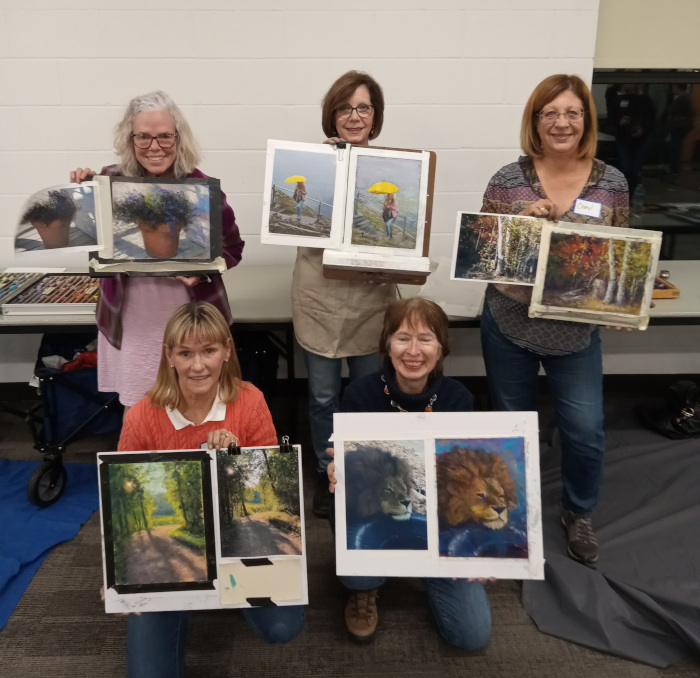
For those of us observing and conversing with the artists, it was interesting to see that two people were using old paintings whose canvases were washed or scraped clean; the other three people used a color sheet. Two of the painters had never seen, nor participated in this type of event before. We never would have known that based on the results of the activity. Dawn Lees said: “My biggest surprise was meeting (other) pastelists and painting together for a good cause.” Nancy Parr had mentioned that: “It was great! Lots of fun….”
The process of a Paint Around involves all five artists bringing an image to work with, but after 12 minutes, they had to pass their painting on to the next person to continue the painting! Only twelve minutes for each round before sending it on to the next person. In the end, each artist gets the last 12 minutes to “finish off” the painting. “I had the happy surprise of people (other painters) having fun with the colors for the lion. It came back looking just like I hoped,” said Sandy Gildersleeve. The highest bidder made by audience members receives the painting they had bid on.
What I found exciting was comparing this to a demo, except you have five demos going on at one time, and at any time you could ask each of the artists any question you wanted. This activity was also a great social time for all the members of the Lake Country Pastel Society attending.

One would never want to miss one of these again, it was so exciting to see such talent at work, each with their own style and choices for the paintings. Said Christine Tierney: “The event went really fast and was so much fun.”
Recap of the October demo
On October 10th we were treated to a meeting featuring a pastel demonstration by Desmond O’Hagan. The internationally-known artist was teaching a three-day workshop class, but gave others of us not participating a vivid glimpse into his process.His way with evening urban scenes is well known. O’Hagan said that he loves dusk, the energy of the city, and jewel-like color.
Working on UART 600 paper, he takes an oil painter’s approach - in an abstract expressionist way. He doesn’t use an underpainting, choosing instead to use powerful straight-lined strokes to block in main shapes. He prefers to imply detail - “It’s what you leave out that’s important.” Going from dark to light, he tests colors on a paper strip adjacent to the painting surface.Most often using the side of a pastel stick he paints over a spare charcoal sketch. “The darks are kind of like a roadmap - to get that foundation.”
As he explained his color choices and painted we watched a damp, darkening, street scene come to life. "I like to change temperatures as I go" he stated - adding bits of yellow and orange over darker areas. He wiped each stick on a paper towel every few strokes - to keep sticks and surface clean. To vary values he pushed down on a stick’s front and back ends - not using the tips of pastels. Most of his original marks became covered by smaller and smaller areas of color. Sticks used ranged from black, purples, grey-greens, and dark reds to mid-tone greens, oranges, and blues to teal, sapphire, and yellow.
O’Hagan occasionally practiced a move in the air before committing pastel to paper. and most often blended by placing pigment over pigment.
More notes on the evening:
- Photographs are simply starting points. He will move components around to improve the composition of a painting. He feels free to change colors and positions of vehicles in the street. “I like to take the photo and go from there.”
- As the painting progressed, shapes became smaller and more precise. Bits of high toned lights appeared. Abstract shapes became more “real.” But - not really. The small shapes of color, when seen from a distance, read as buildings, streets, and vehicles. But, when viewed close up these same areas of color became quite abstract. O’Hagan said, “The closer you get, you'll realize how abstract it is.” So much of what we thought we saw was only implied. “You have to put the marks on and move on.”
- Usually a painting is put aside when about eighty percent done. Then the artist will return to it, consider more actions, and create a finished piece.
It was an evening very well spent by those in attendance. And a joy to watch a master at his craft.
